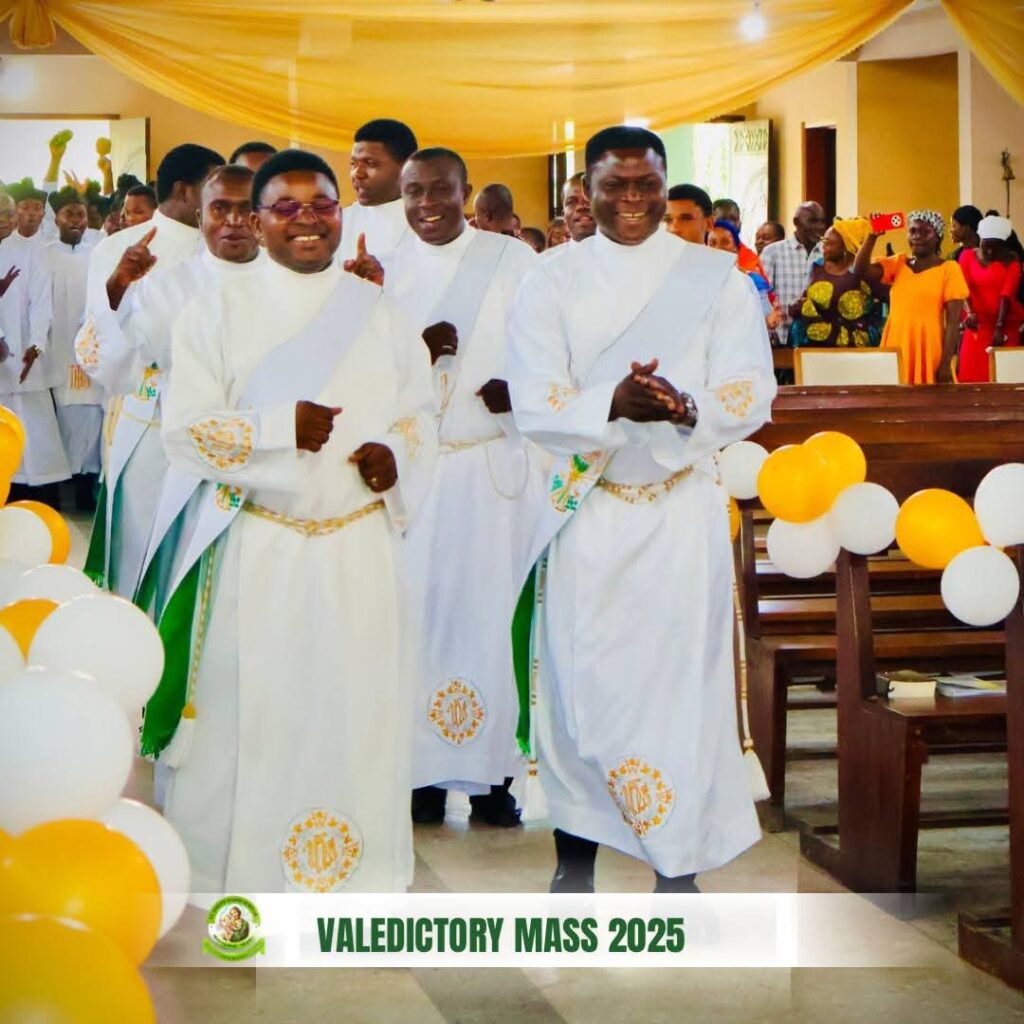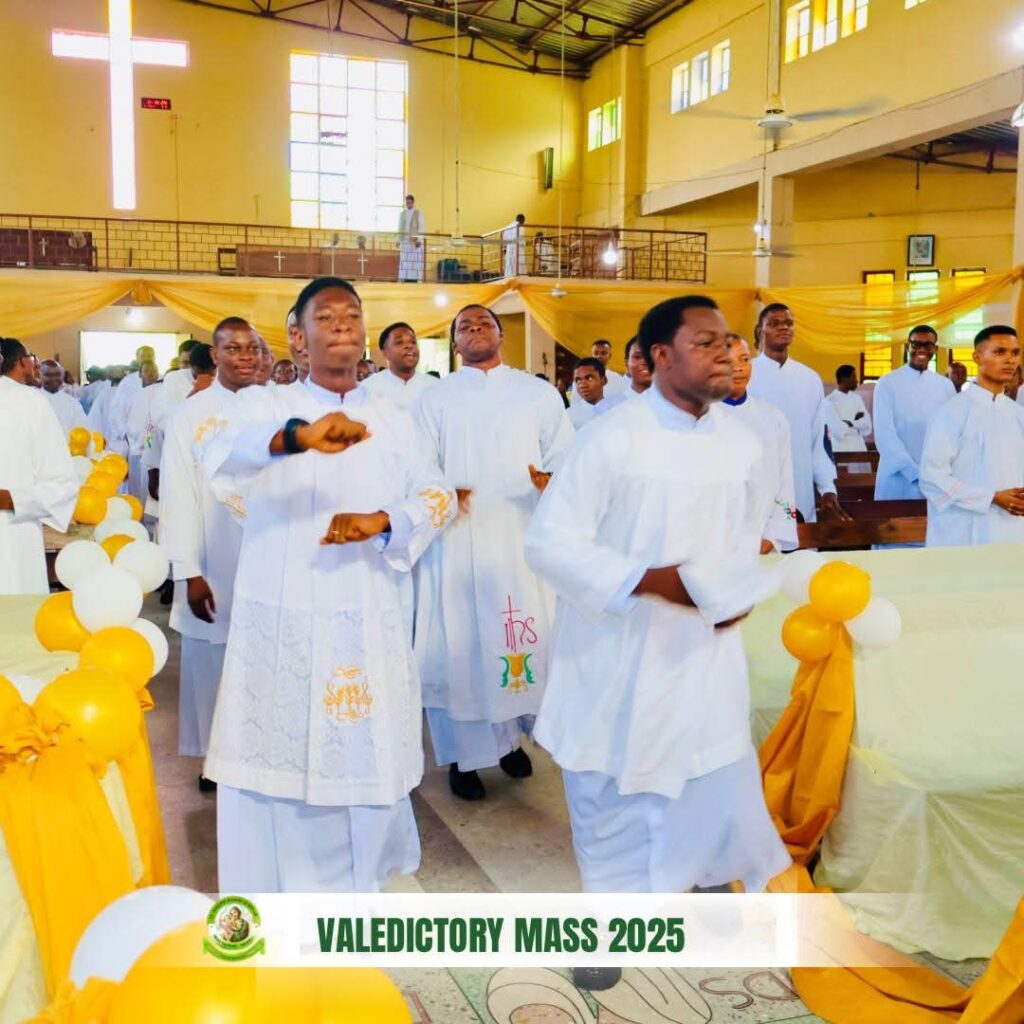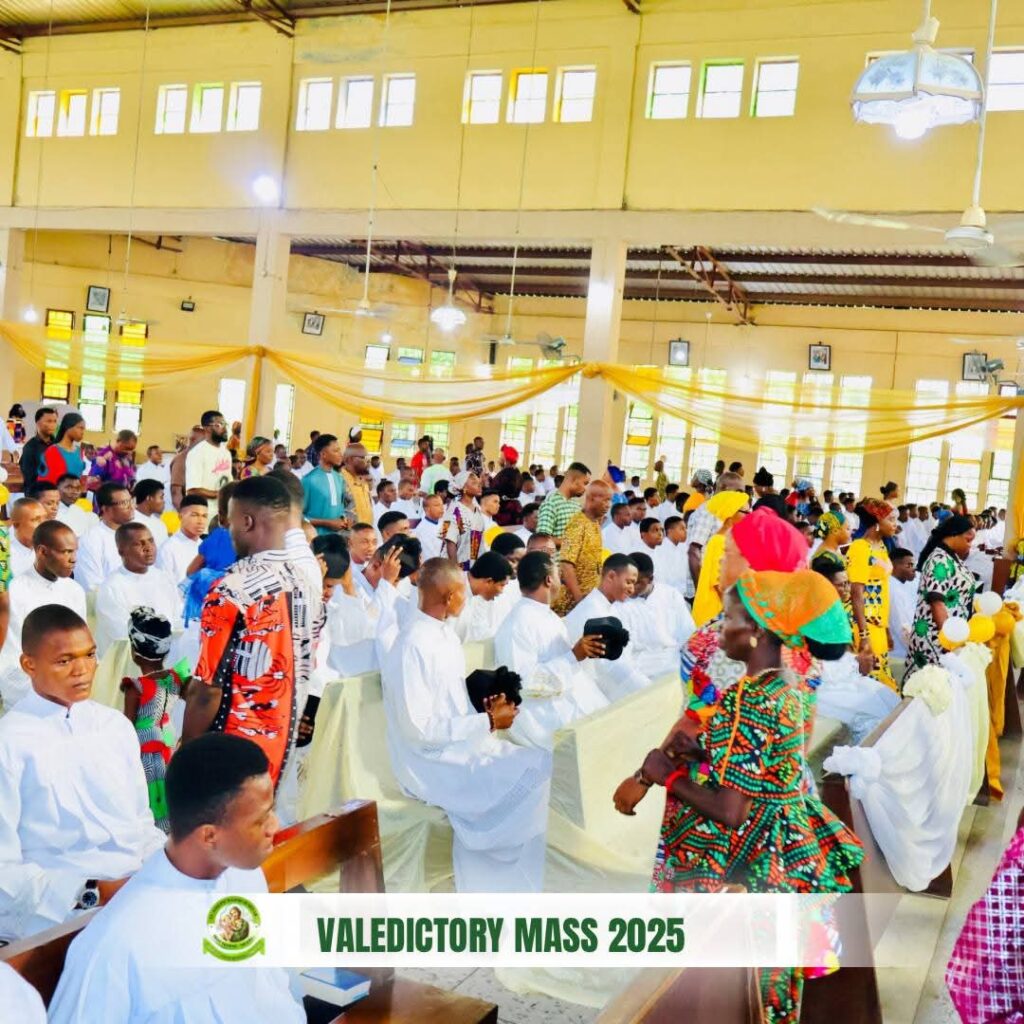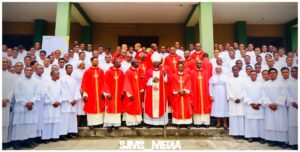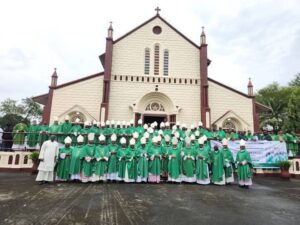THE THANKSGIVING MASS OF THE GRADUATING STUDENTS OF THEOLOGY AND PHILOSOPHY
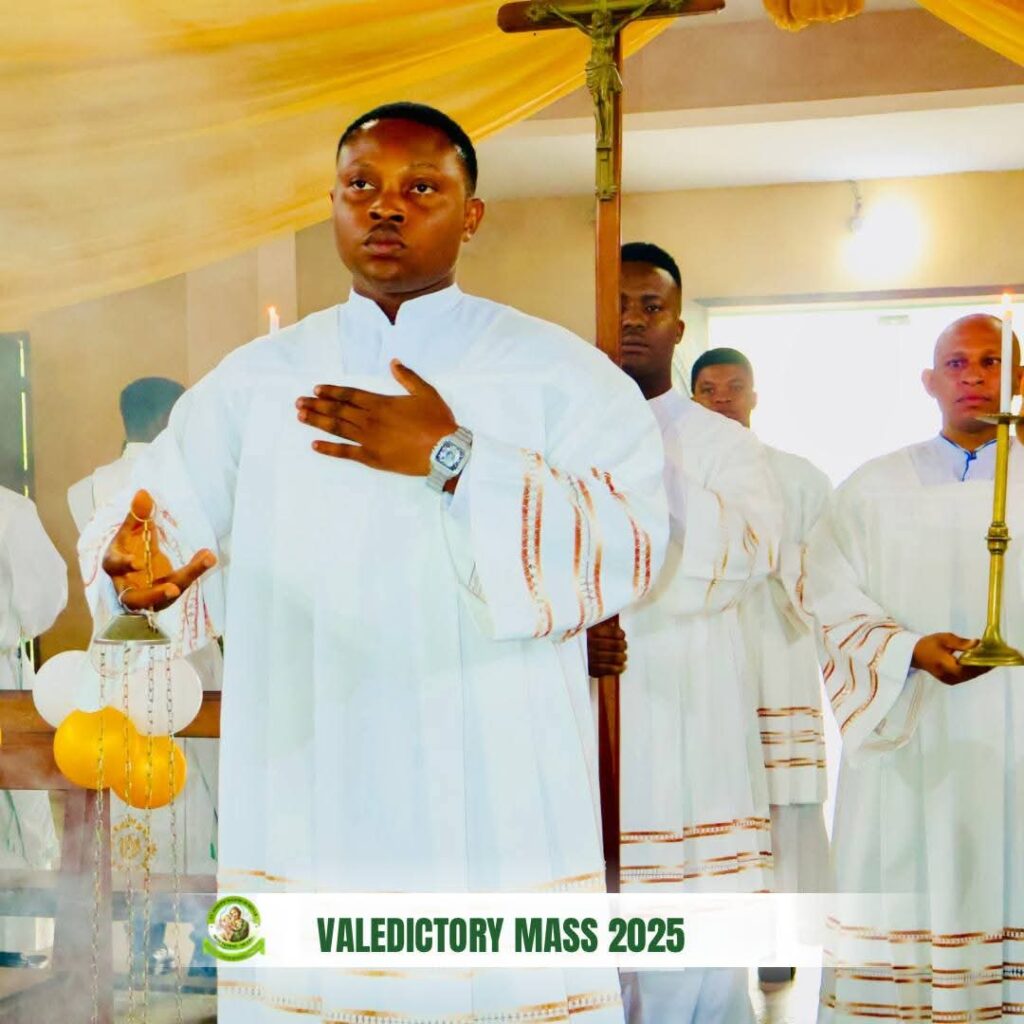
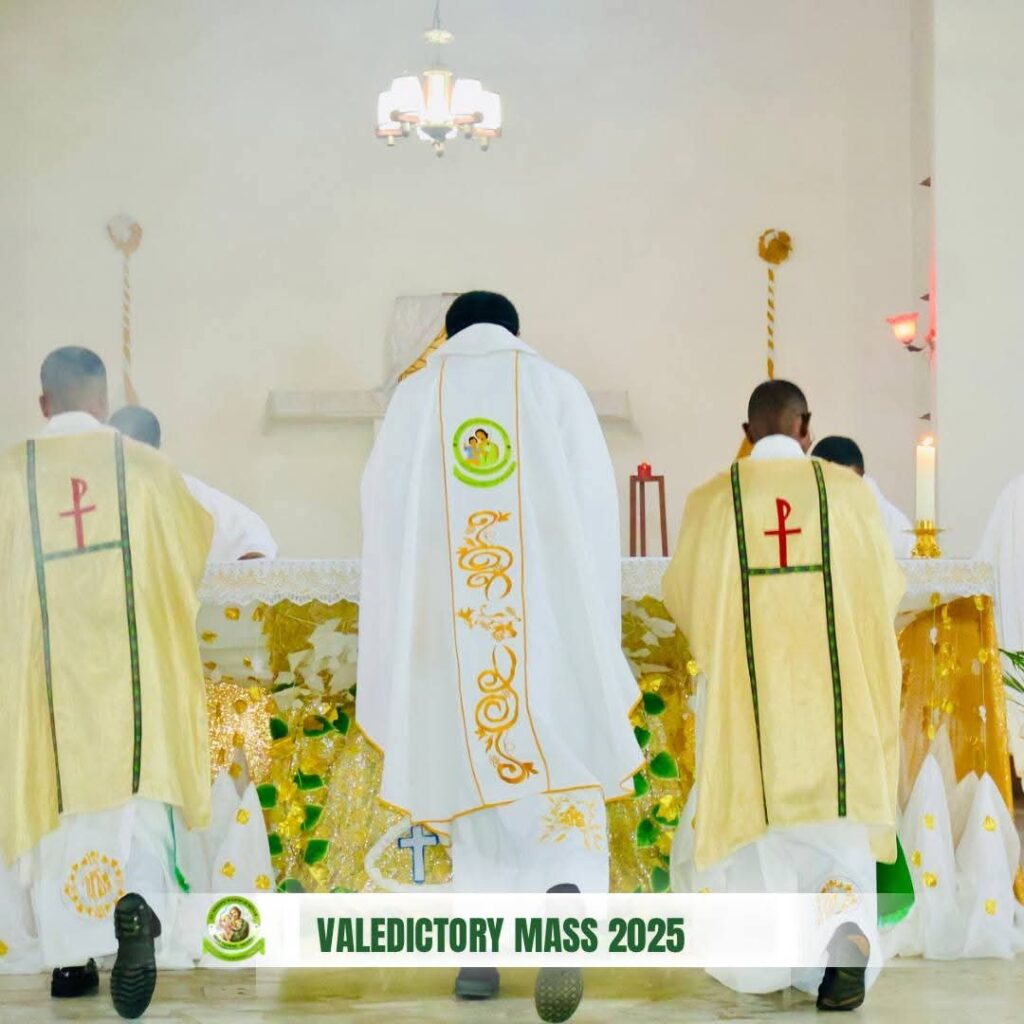
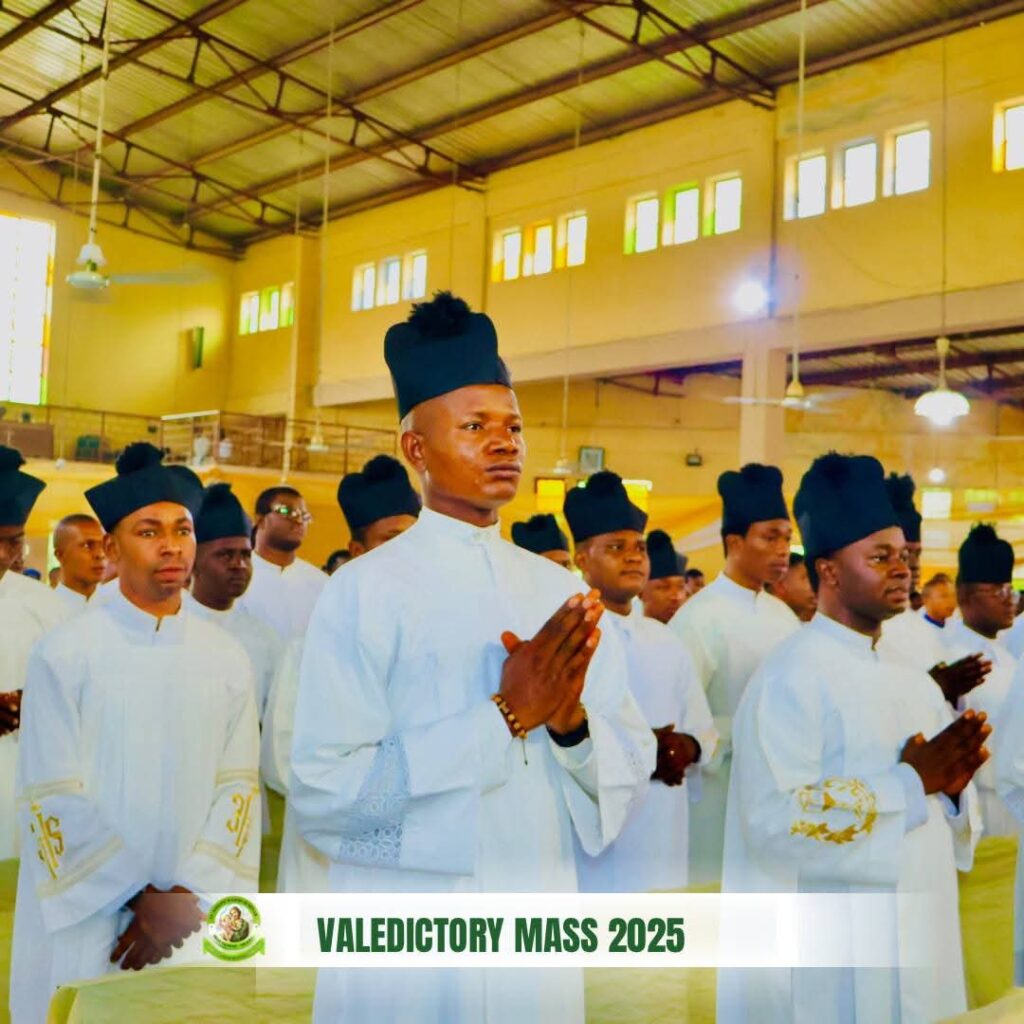
The theology of the Trinity explores the nature of the one God as a communion of three distinct persons: Father, Son, and Holy Spirit. This doctrine affirms that God is one in essence, substance, or nature, yet exists eternally in three persons. These persons are coequal, co-eternal, and consubstantial, meaning they share the same divine being.
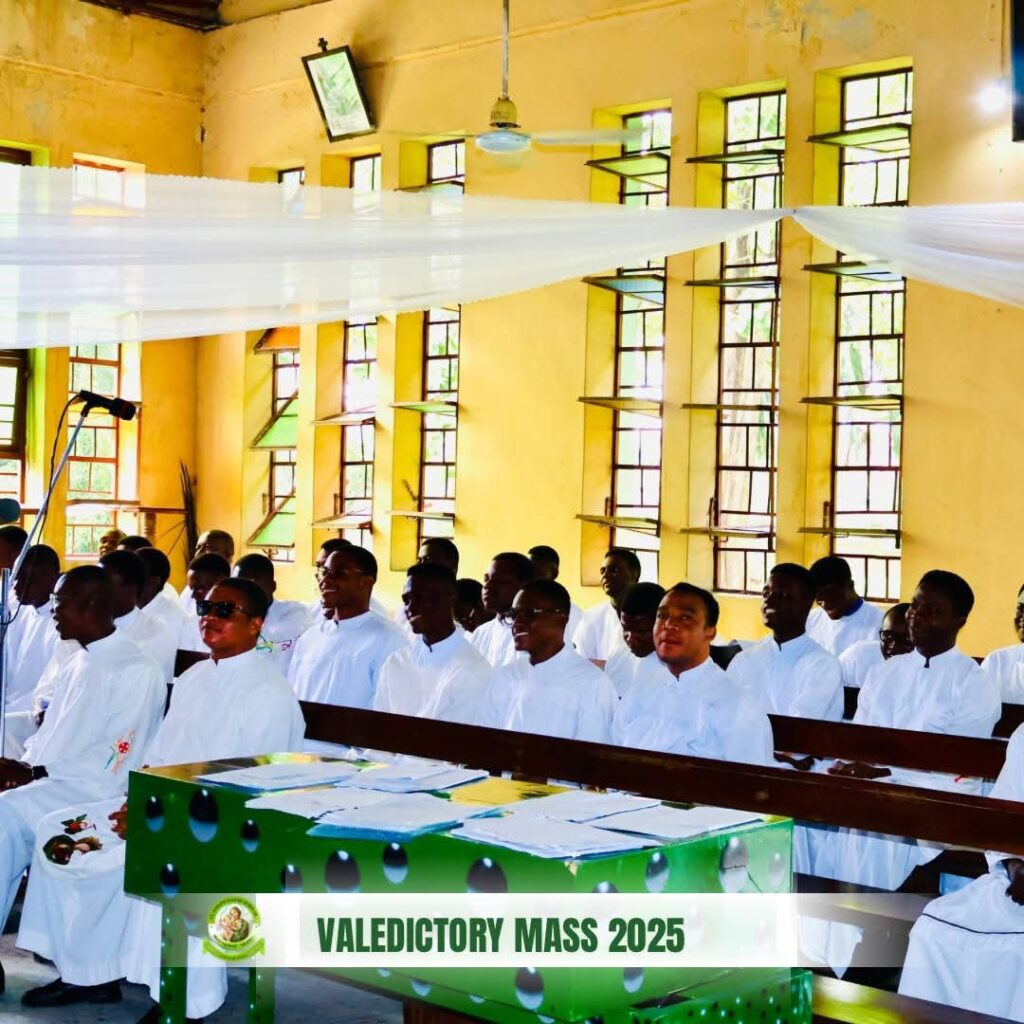
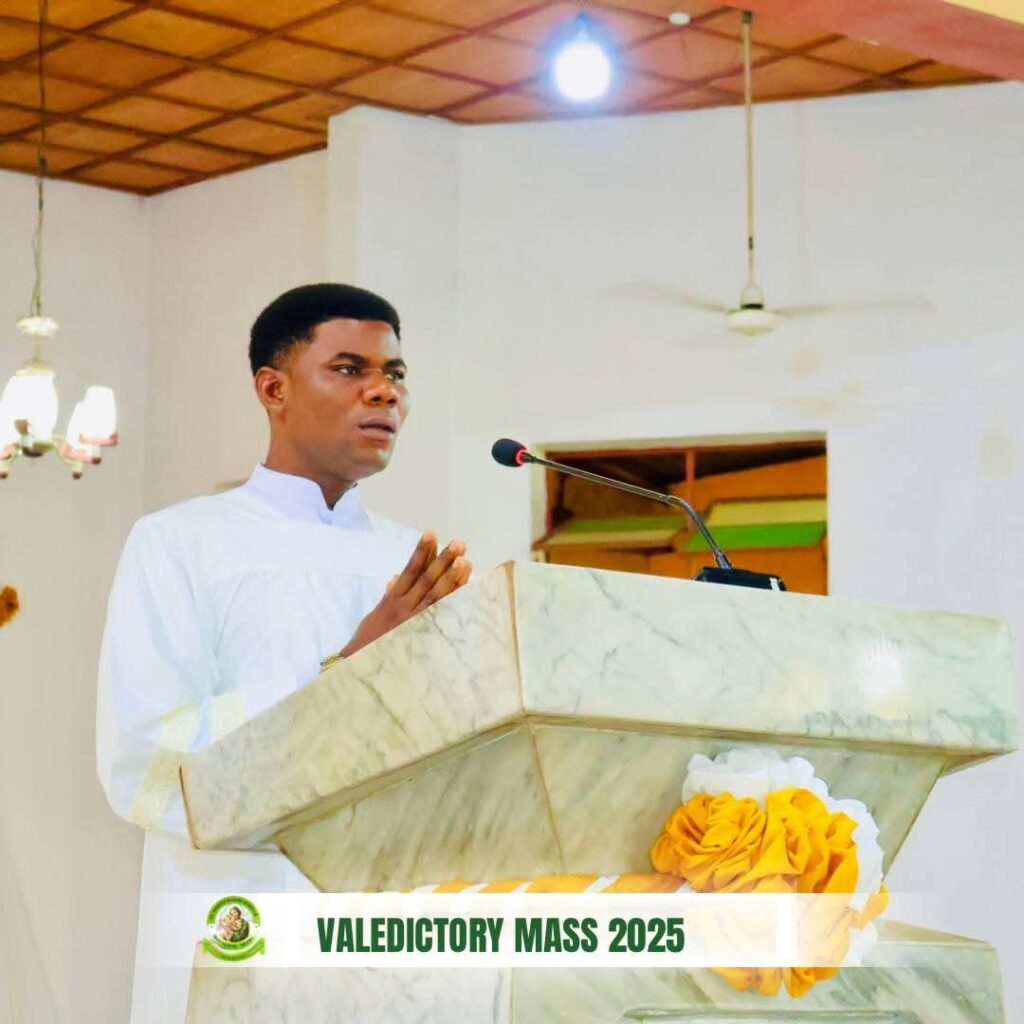

THE HOMILY
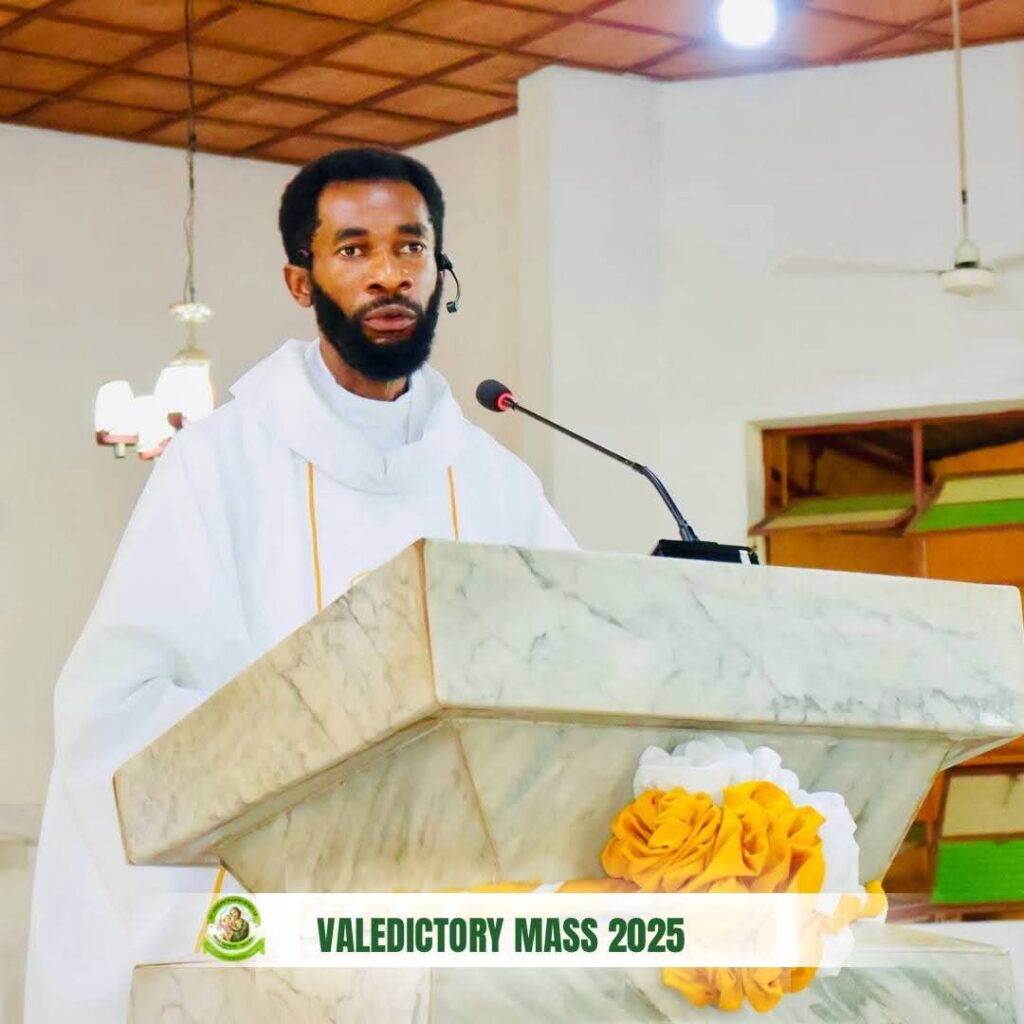
In Catholic theology, we understand the persons of the Blessed Trinity subsisting within the inner life of God to be truly distinct relationally, but not as a matter of essence, or nature. Each of the three persons in the godhead possesses the same eternal and infinite divine nature; thus, they are the one, true God in essence or nature, not “three Gods.” Yet, they are truly distinct in their relations to each other.
In order to understand the concept of person in God, we have to understand its foundation in the processions and relations within the inner life of God. And the Council of Florence, AD 1338-1445, can help us in this regard.
The Council’s definitions concerning the Trinity are really as easy as one, two, three… four. It taught there is one nature in God, and that there are two processions, three persons, and four relations that constitute the Blessed Trinity. The Son “proceeds” from the Father, and the Holy Spirit “proceeds from the Father and the Son.” These are the two processions in God. And these are foundational to the four relations that constitute the three persons in God. These are those four eternal relations in God:
- The Father actively and eternally generates the Son, constituting the person of God, the Father.
- The Son is passively generated of the Father, which constitutes the person of the Son.
- The Father and the Son actively spirate the Holy Spirit in the one relation within the inner life of God that does not constitute a person. It does not do so because the Father and Son are already constituted as persons in relation to each other in the first two relations. This is why CCC 240 teaches, “[The Second Person of the Blessed Trinity] is Son only in relation to his Father.”
- The Holy Spirit is passively spirated of the Father and the Son, constituting the person of the Holy Spirit.
We should take note of the distinction between the “generative” procession that constitutes the Son, and the “spirative” procession that constitutes the Holy Spirit. As St. Thomas Aquinas explains, and Scripture reveals, the Son is uniquely “begotten” of the Father (cf. John 3:16; 1:18). He is also said to proceed from the Father as “the Word” in John 1:1. This “generative” procession is one of “begetting,” but not in the same way a dog “begets” a dog, or a human being “begets” a human being. This is an intellectual “begetting,” and fittingly so, as a “word” proceeds from the knower while, at the same time remaining in the knower. Thus, this procession or begetting of the Son occurs within the inner life of God. There are not “two beings” involved; rather, two persons relationally distinct, while ever-remaining one in being.
The Holy Spirit proceeds from the Father and the Son, but not in a generative sense; rather, in a spiration. “Spiration” comes from the Latin word for “spirit” or “breath.” Jesus “breathed on them, and said to them, “Receive the Holy Spirit…” (John 20:22). Scripture reveals the Holy Spirit as pertaining to “God’s love [that] has been poured into our hearts” in Romans 5:5, and as flowing out of and identified with the reciprocating love of the Father for the Son and the Son for the Father (John 15:26; Rev. 22:1-2). Thus, the Holy Spirit’s procession is not intellectual and generative, but has its origin in God’s will and in the ultimate act of the will, which is love.
As an infinite act of love between the Father and Son, this “act” is so perfect and infinite that “it” becomes (not in time, of course, but eternally) a “He” in the third person of the Blessed Trinity. This revelation of God’s love personified is the foundation from which Scripture could reveal to us that “God is love” (I John 4:8).
God is not revealed to “be” love in any other religion in the world other than Christianity because in order for there to be love, there must be a beloved. From all eternity, the Father, Son, and Holy Spirit have poured themselves out into each other in an infinite act of love, which we, as Christians, are called to experience through faith and the sacraments by which we are lifted up into that very love of God itself (Romans 5:1-5).
It is the love of God that binds us, heals us, and makes us children of God (I John 4:7; Matt. 5:44-45). Thus, how fitting it is that the Holy Spirit is depicted in Revelation 22:1-2, as a river of life flowing out from the Father and the Son and bringing life to all by way of bringing life to the very “tree of life” that is the source of eternal life in the the Book of Revelation (Rev. 22:19).
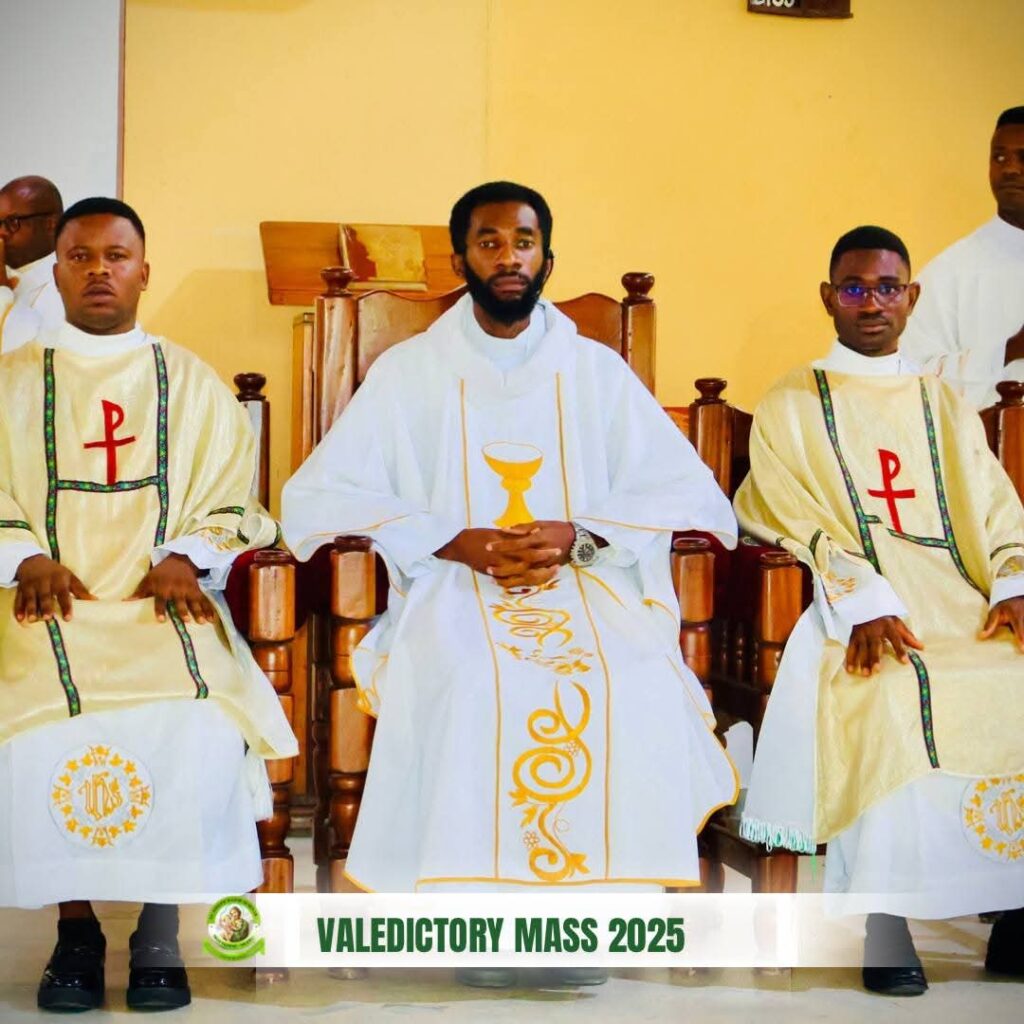
Analogy is the theologian’s best friend in explaining the mysteries of the Faith. And when it comes to the Trinity, there are many analogies to choose from. We will explore just two of them here that I have found helpful. In fact, it was these very two analogies that helped my Muslim friend to say the idea of the Trinity “made sense” to him, even though he wasn’t ready to leave his Muslim faith… at least, not yet.
From his famous and classic Confessions, Bk. 13, Ch. 11, St. Augustine writes:
I speak of these three: to be, to know, and to will. For I am, and I know, and I will: I am a knowing and a willing being, and I know that I am and that I will, and I will to be and to know. Therefore, in these three, let him who can do so perceive how inseparable a life there is, one life and one mind and one essence, and finally how inseparable a distinction there is, and yet there is a distinction. Surely a man stands face to face with himself. Let him take heed of himself, and look there, and tell me. But when he has discovered any of these and is ready to speak, let him not think that he has found that immutable being which is above all these, which is immutably, and knows immutably, and wills immutably.
In order to appreciate Augustine’s words, we must begin with three essential and foundational truths that undergird them. Without these, his words will fall on deaf ears.
- We believe in one, true God, YAHWEH, who is absolute being, absolute perfection, and absolutely simple. Our belief in the Trinity does not mean God is three, or any other number of Gods.
- Humankind is created “in [God’s] image and likeness” (cf. Gen. 1:26). From the context of Genesis 1, we know this “image and likeness” does not pertain to the body of man because God has no body. Indeed the divine nature cannot be bodily or material because there can be no potency in God as there is inherent in bodies, so this “image and likeness” must be referring to our higher faculties or operations of intellect and will.
- It follows, then, that God is rational. He too is both intellectual and volitional.
These simple truths serve as the foundation for what I call St. Augustine’s anthropological analogy that can help us to understand better the great mystery of the Trinity:
In God we see the Father—the “being one” and first principal of life in the Godhead—the Son—the “knowing one”—the Word who proceeds from the Father—and the Holy Spirit—the “willing one”—the bond of love between the Father and Son who proceeds as love from the Father and Son. These “three” do not “equal” one if we are trying to say 3=1 mathematically. These three are distinct realities, relationally speaking, just as my own being, knowing, and willing are three distinct realities in me. Yet, in both God and man these three relationally distinct realities subsist in one being.
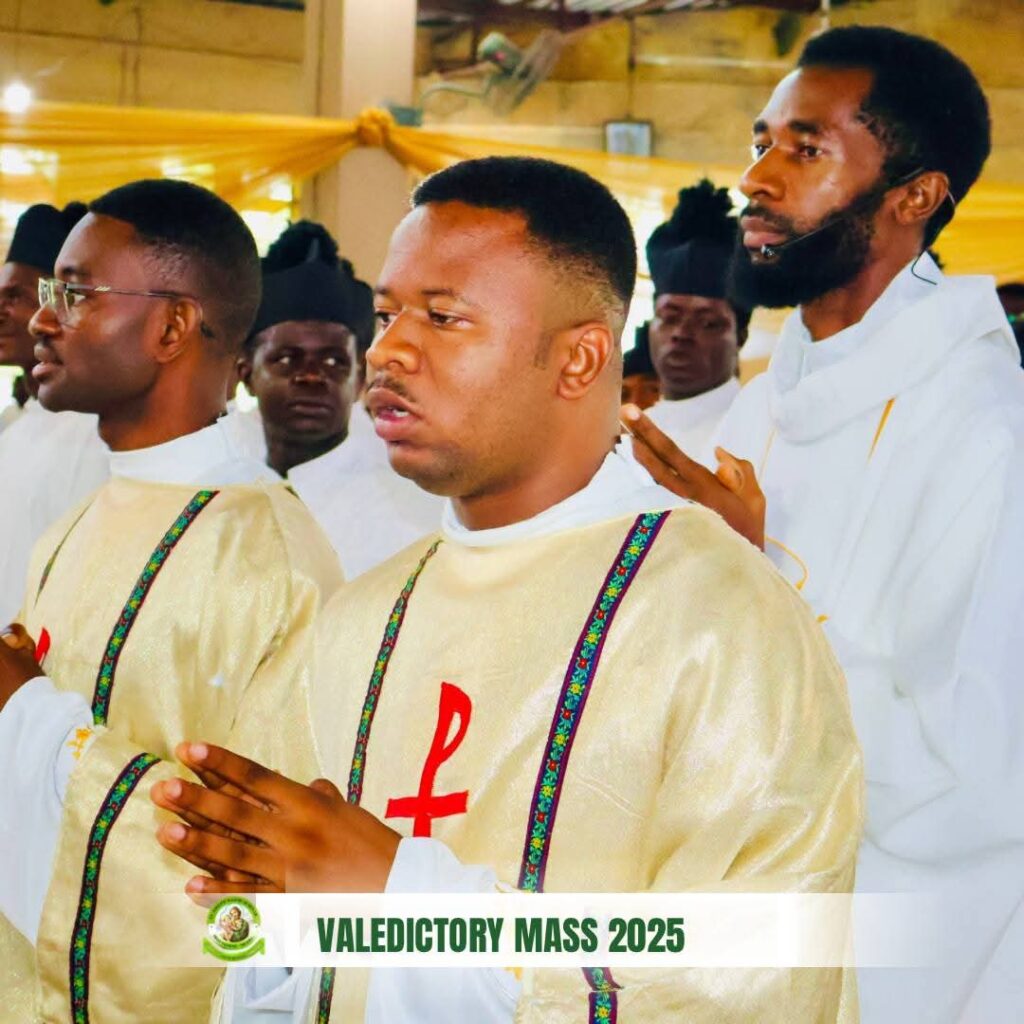
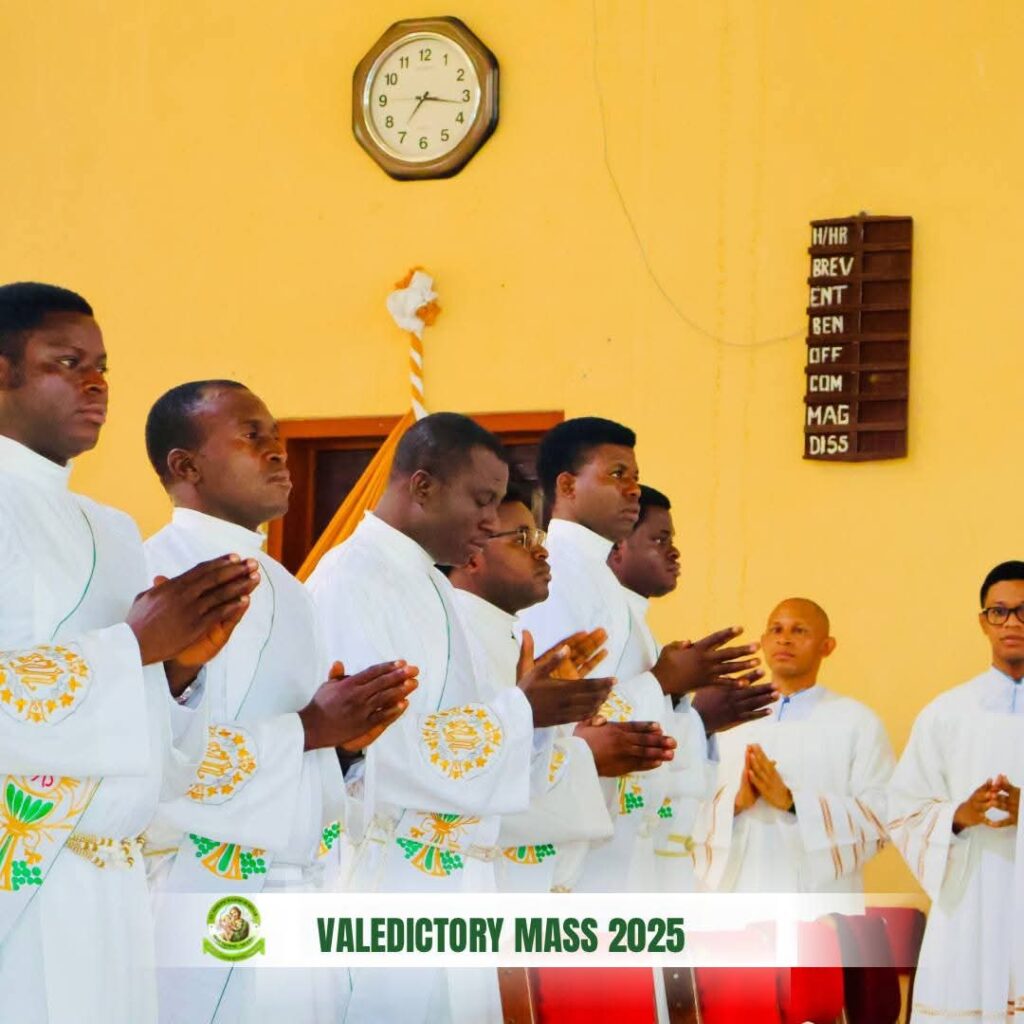
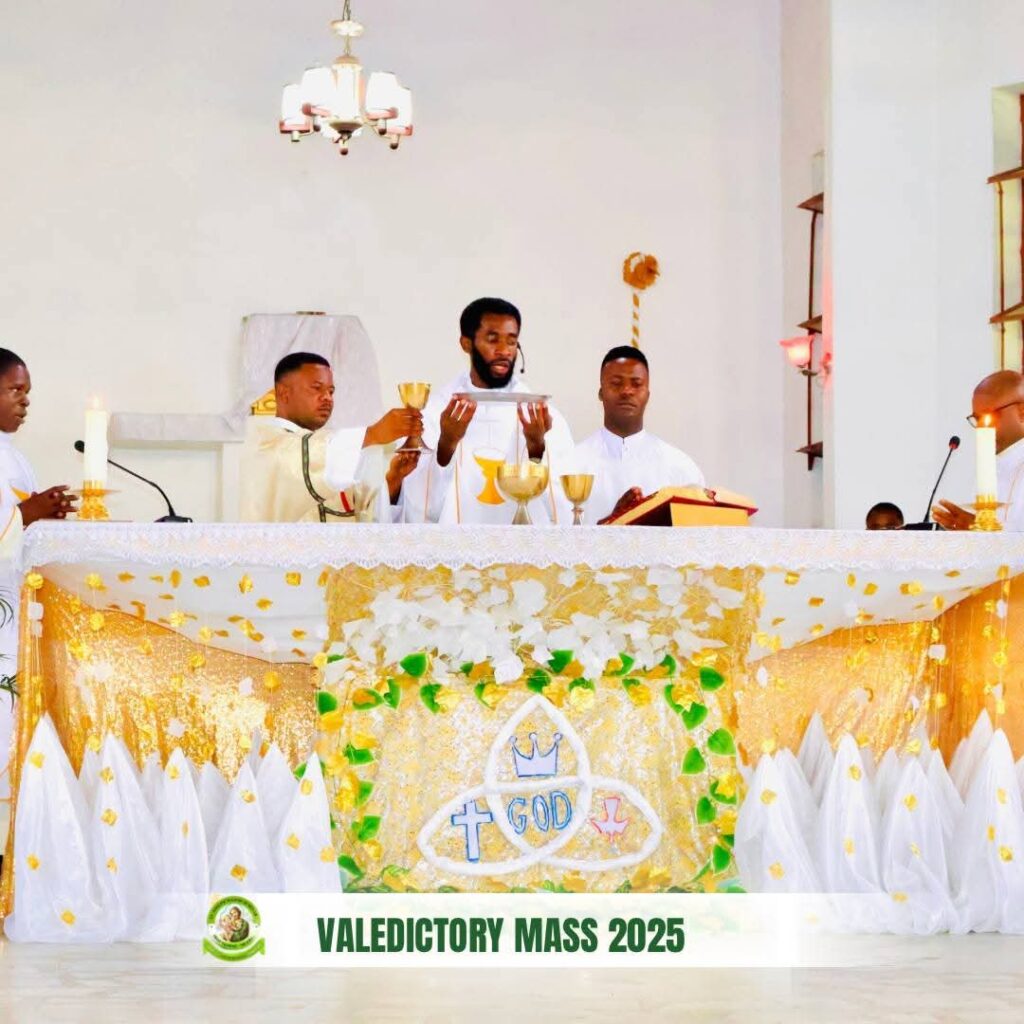
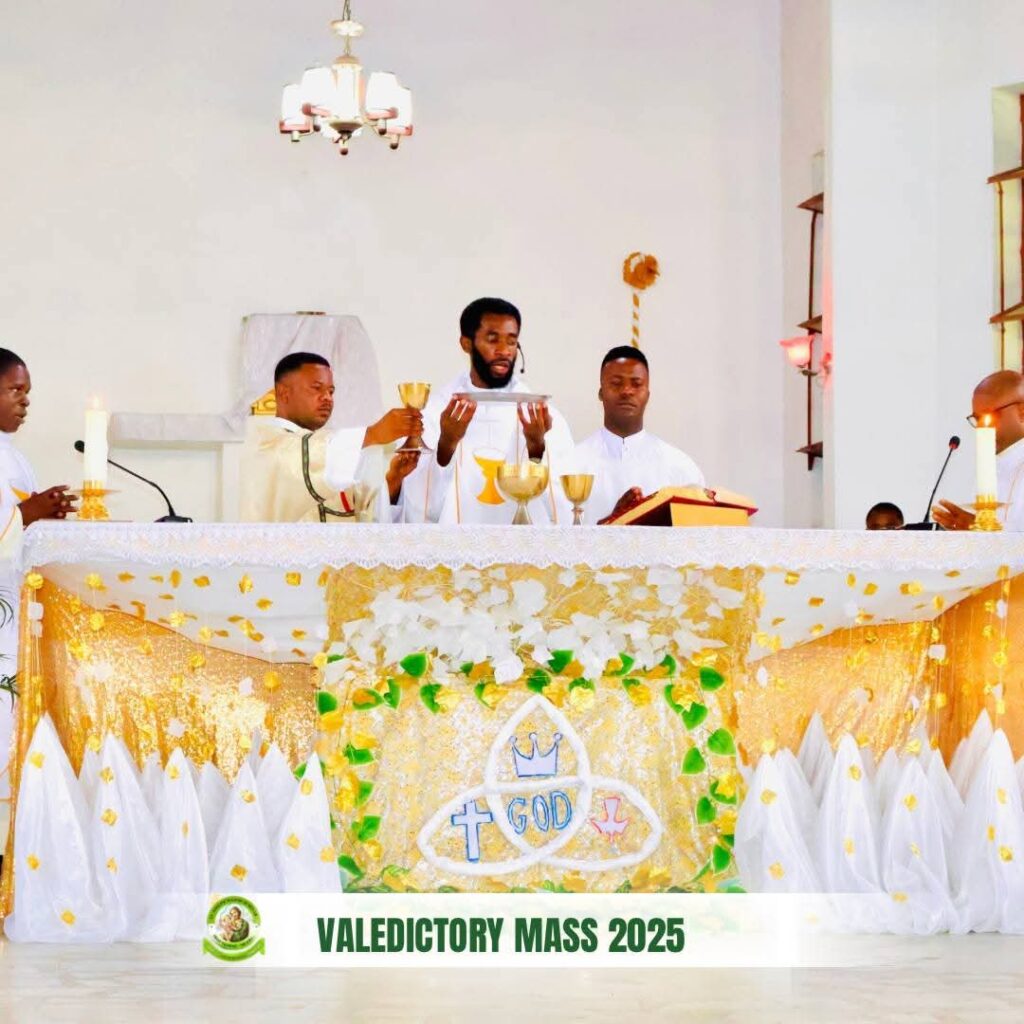
As St. Augustine points out, we can never know God or understand God completely through this or any analogy, but it can help us to understand how you can have relational distinctions within one being. And we can see this is reasonable.
The weakness inherent here—there are weaknesses in all analogies with reference to God—is that our knowing, being, and willing are not each infinite and co-extensive as the persons of God are. They subsist in one being in us, but they are not persons.

